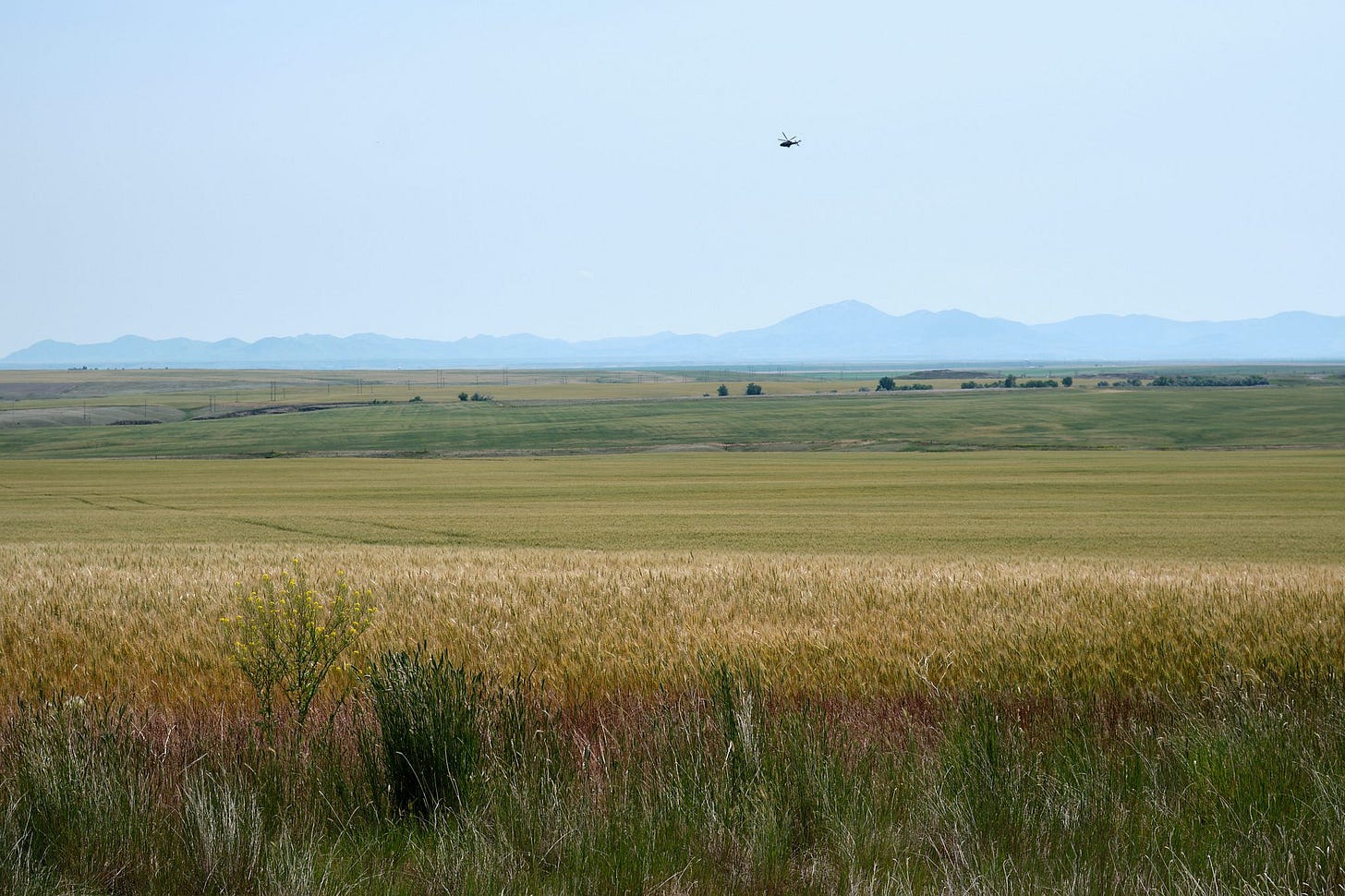For Massive Great Falls Data Center Proposal, Energy Supply is Crucial to Push Project Forward
The data center’s projected electricity needs of up to 600 megawatts will likely require new power sources, transmission upgrades or both
By Matt Hudson, Montana Free Press

Montana has about 540,000 housing units, according to the U.S. Census Bureau. A proposed data center in Great Falls may require enough electricity to power 88% of those homes for a year.
Announced on June 17, the data center is proposed for a 569-acre plot just outside of Great Falls’ northeast boundary. The developer is TAC Data Centers, a subsidiary of a Georgia real estate private equity firm called The Ardent Companies. The numbers in a preliminary proposal estimate a massive, 2-million-square-foot campus with up to 200 permanent jobs upon completion.
But the project’s electricity needs of up to 600 megawatts (MW) could prove the most crucial figure. That would likely make it the largest data center in Montana, part of a fast-growing industry to serve the needs of AI generators and cloud-computing services.
A primary concern is that kind of power isn’t currently available in this corner of Cascade County. The Colstrip power plant, the state’s largest single generator of electricity, has a capacity of nearly 1,500 MW. Second is the Noxon Rapids hydroelectric dam at 562 MW. Most of that electricity is already contracted for use.
That leaves the door open for a number of options to supply that power, all of which come at a cost.
“There are a lot of different ways you can configure a data center,” said Jim Morin, founder of the Great Falls advisory firm PowerGas Corporation. “They may be looking for on-site [power generation]. They may also try to get some power on the grid. And they may be looking to export.”
Power generation on-site, built by a developer, would likely be fueled by natural gas, Morin said. That’s an expensive proposition — the recently finished natural gas power plant in Laurel cost $320 million and generates 175 MW. In addition to building a gas turbine power facility, the Great Falls site would also need to build infrastructure to bring in enough natural gas.
The data center could purchase electricity from outside generators to meet its needs, and there are environmental concerns about how that energy is created. Many large data centers are powered by burning coal, though there is a market demand to move toward renewable sources. In 2020, a company called Marathon Patent Group co-located a cryptocurrency mining operation with the long-struggling, coal-powered Hardin Generating Station in southeast Montana. Two years later, Marathon abandoned the Hardin plant and moved to Texas to take advantage of wind farms. Marathon updated its name and marketing and placed “climate” among its top three values.
The company behind the Great Falls proposal noted that it has been in talks with four power generators, though it didn’t say what kinds. TAC Data Centers didn’t return an inquiry from Montana Free Press. NorthWestern Energy will play a large role in this project as the state’s regulated utility that supplies electricity and controls much of the transmission infrastructure. The developer is waiting for a transmission study to analyze the system’s ability to serve the data center and options to beef up infrastructure.
NorthWestern spokesperson Jo Dee Black told MTFP that she wasn’t yet sure when that study would take place. Part of the study will determine how infrastructure upgrades are funded. Black also said she could not comment on the capacity of NorthWestern’s transmission lines.
NorthWestern is under scrutiny from the Montana Public Service Commission for inking deals with other data center projects to supply as much as 400 MW of power by 2030. One of the companies is Butte-based Atlas Power. The other company is not publicly known, according to the Missoulian. That supply will come from the coal-fired Colstrip power plant, among the largest sources of greenhouse gas emissions in the country. By 2026, NorthWestern will acquire additional shares of the Colstrip plant that produces 593 MW.
The PSC has asked NorthWestern to prove that the data center deals won’t negatively affect ratepayers or the state’s electrical grid.
The potential for data centers to prop up coal-based energy generators and the need for transmission system upgrades has Anne Hedges of the Montana Environmental Information Center concerned about impacts to average ratepayers.
“The bottom line is this is another data center that wants to locate in the state of Montana, in a state where we’re seeing really high electricity price increases,” said Hedges, the organization’s executive director.
In June, hearings began at the PSC about NorthWestern’s latest request for rate increases that will, in part, recover costs related to the construction of the Laurel natural gas plant.
Hedges is also concerned about challenges to regulatory oversight. During the spring session of the Montana Legislature, one bill sought to remove the PSC’s ability to review and vote on large-load customers, like data centers, to purchase power from NorthWestern.
The bill failed, but the debate pitted the perceived economic benefits of large data centers against straining the electricity infrastructure that could struggle to keep up without major improvements. That debate could play out in Great Falls with the current proposal.
The developer, TAC Data Centers, signaled that the transmission study through NorthWestern is key to getting the project going. The company hopes to secure power and permitting before 2027 and complete it by 2030.



